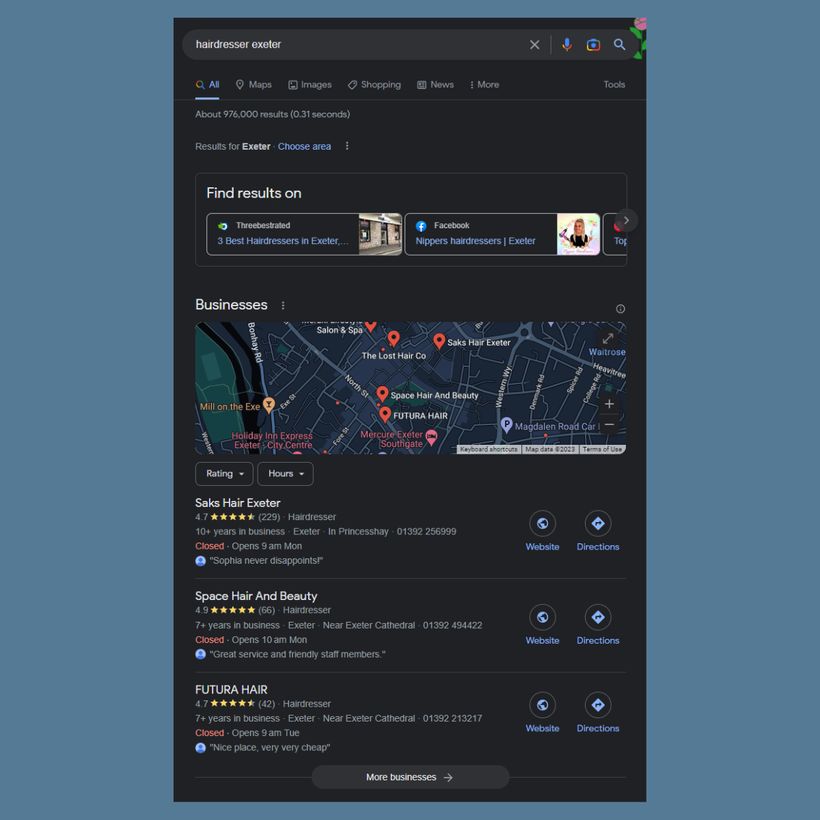Checklist: Fundamental Marketing & SEO for Small Businesses
Estimated reading time: 4 minutes, 39 seconds. Contains 932 words.
This is an article from The Business Boost & Build Newsletter.
It’s once a week and includes one tip from me and three resources from others.

There are a few things I check for all my new clients that lay the groundwork for their online marketing success.
It’s the bare minimum for growing your business online.
With this checklist in place, you will:
- Have analytics to track your performance over time
- Capture audience data for running ads
- Own customer data to promote your business for free
- Get the opportunity to show up in Google Maps results
- Be featured on and get links from other websites
- Generate more leads and enquiries
Install Google Tag Manager, Google Analytics (Plus Ecommerce Data)
I find using Google Tag Manager the easiest way to manage my website tracking, analytics and pixels all in one place.
It’s completely free, and takes only a few minutes to set up (if you know what you’re doing).
Once Google Tag Manager is working, you’re able to add tracking code and triggers to your website on the fly - without changing anything on your website.
Read more about getting Tag Manager set up here, from Google.
You can also follow my quick Google Tag Manager and GA4 guide here.
Once that is working, you’ll be able to add Google Analytics 4, and any social media pixels you need. Facebook, Twitter, Quora, Adwords, LinkedIn, Reddit, etc all have their own.
This is a great in depth walk through of setting up GA4 with Ecommerce tracking, if you’re technically inclined.
Otherwise I’ll be more than happy to help you set this up, just send me a message.
Connect Google Search Console
Google Search Console is another must have.
Again, completely free and once you have verified (via DNS, a meta tag, or file you upload to your website) you can connect it with your other Google properties like Analytics and AdWords.
Google Search Console will show you search terms, search performance, website errors and issues, links to your website and more.
It’s an amazing resource which I use everyday, and I recommend every website to have this.
Create a Newsletter and Add Opt-in’s to Your Website
Growing your social media presence and website search engine rankings is great.
But it’s no substitute for having direct access to your customers inbox.
When you send an email you don’t need to worry about the algorithm (and if your customers will see your posts) and it’s completely free (unlike running ads).
It takes a fair amount of time and effort to have a decent newsletter that potential customers will sign up for, but I think it’s one of the most valuable assets for your business.
Add newsletter sign-up call-to-actions across your website, provide real value in your emails and think long term.
Remember the 80/20 rule when sending emails:
- 80% value
- 20% ask
Set up your Google My Business account
Free and a must have for local small businesses.
When you have a verified Google My Business profile, you have the chance to show up in the map snippet for local search terms.

This is still such an easy quick win in 2023, which kind of blows my mind. Get your account here.
In one of my recent newsletter articles I talk about how to get verified and optimise your Google My Business profile. I recommend reading it and following the steps.
Monitor Journalist Requests to Get Featured in Blogs, Magazines and on TV
You’ve probably heard that links and mentions of your website online help you to rank higher in search engines.
It’s true, but how can you do this without time consuming personal outreach and networking?
Well that’s where journalists can help. They’re always looking for a quote, expert or resources for their articles.
You might even get invited to speak live on a TV interview (I’ve done this for my clients).
Get yourself signed up to the following free services:
These are free and there are other paid alternatives.
You’ll get a daily email with requests for source experts giving you free publicity in some of the biggest news outlets in the world.
They won’t all be suitable, and admittedly you’ll need to be quick with the ones that are, but it’s well worth your time. These links and mentions are very valuable.
Include Your Telephone Number and Plenty of Call-To-Actions on Your Website
Maybe the biggest mistake I see with small businesses or solopreneurs’ websites.
Not enough call-to-actions.
Sometimes it’s even difficult to find out how to contact the business or person!
Have your number or a big obvious “contact us” button at the top right of your website navigation.
You should also add CTA’s in your website copy, again making them obvious and direct.
Some resources I have about improving your website to get more enquiries:
Focus On Building One Social Media Channel at a Time (Unless You Have a Team)
We only have a limited amount of time in the day, and most of your time should be spent on actions that move the needle for your business.
It takes time and effort to grow your social media accounts, and you won’t see a return on that investment for a while.
That’s why I recommend my clients focus on one social media platform at a time.
Grow an audience on the most suitable platform, master it and then branch out as your business grows (and you’re able to bring on more staff).
Here are a few tips:
- Start with the most suitable platform for your business.
- Repurpose and reuse content from blog articles
- Use social media analytics to see what resonates with your audience
- Optimise your profile and have a long term strategy
If you’re using Twitter, check out my recent article about growing your brand on Twitter.